JONAH
Typographic Exploration of the Biblical Narrative

Exclusively using the biblical text, this laser-engraved plaque conveys the emotions, structure, and irony of the story of Jonah.
PROCESS
INDEPENDENT STUDY CONDUCTED UNDER PROFESSOR HELEN SANEMATSU
Each verse was visually interpreted through sketches to create a set of reference images for the typography.


















The typography and layout of Ancient Near Eastern texts were studied and compared.


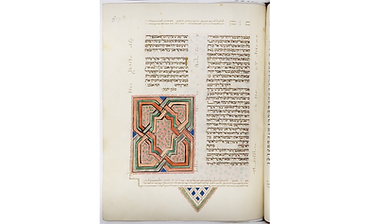
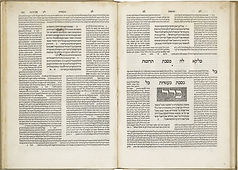
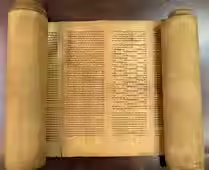



Drafts were created to typographically visualize the narrative.



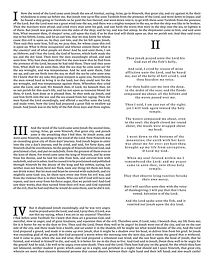
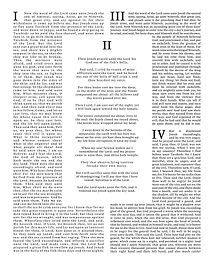


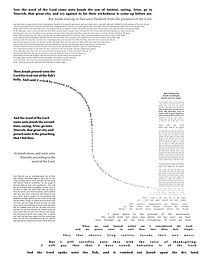
Final Text Layout
The final formatting illustrates several key themes and the narrative structure of the text. The story of Jonah is traditionally divided into four different chapters, with the first two chapters mirroring the final two. It dives into the dichotomies of chaos and order, punishment and forgiveness, and rebellion and obedience. Each passage of the text is type-set in a way to portray both the actions of the characters and the emotions they experience, all while adding emphasis on the frequent use of irony the author incorporates throughout the story.
The first chapter, seen in the upper left quadrant of the poster, details the calling of Jonah from the Lord to tell the people of Nineveh to repent of their wicked ways. Jonah attempts to escape the Lord by sailing away but is thrown into the sea, a common symbol of chaos, to further escape the Lord’s command.
Located beneath this text lies chapter two, Jonah’s prayer from the depths of the sea. By following the poem’s emotive structure, the viewer’s eye is taken to the bottom of the poster as Jonah’s descent into the Jewish resting place of the dead is visualized.
At a pivotal point in the story, Jonah is brought back from this place of death and returned to dry land, triggering the second half of the story which parallels the first. This is indicated by a sentence break guiding the viewer back to the top of the poster, where a similar visual descent can be seen as Jonah enters Nineveh to deliver the message. In contrast to the first half, Jonah does execute his calling, but in a continued rebellious manner. Circular text and negative space are used to emphasize his ill-intended message to the Ninevites.
The concluding chapter shows Jonah revealing the bitterness in his heart through his negative and vengeful reaction to the Lord’s mercy shown to the Ninevites. Distorted text, resembling the watery grave he was saved from, emphasizes a second descent into chaos. The remaining text transcribes a dialogue between Jonah and the Lord, where Jonah’s painful rage is shown using sharp and warped typography.

